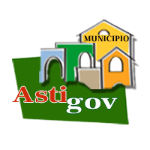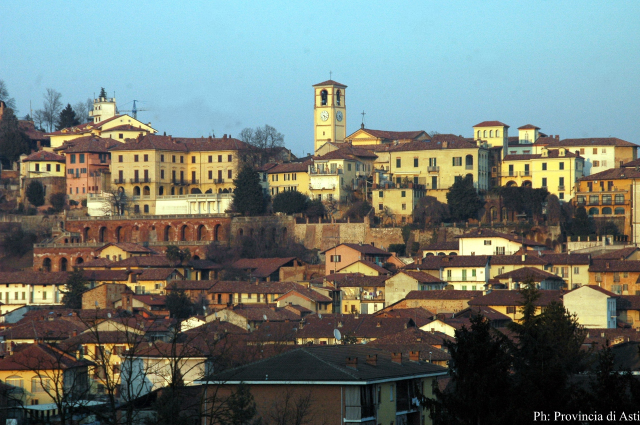Castelnuovo Don Bosco
Last update 30 January 2024
Two steps through Castelnuovo Don Bosco, the “Land of Wines and Saints” of the High Astigiano
Landscape
Castelnuovo Don Bosco is known worldwide for being the “Land of Wines and Saints”.
It is about 33 km from Asti, the provincial capital.
History
Archaeological finds testify to the presence of settlements as early as Roman times.
The foundation of the Municipality is indicated in 1160 under the dominion of the Marquises of Turin.
Under the domination of the Rivalba family, the Municipality of Castelnuovo Don Bosco experiences its most significant historical period (12th-13th centuries).
After a brief interlude under the rule of Asti, the village returned to the possessions of the Marquises of Monferrato and later under the rule of Emanuele Filiberto, Duke of Savoy.
Notes: historical hints provided by “Appunti liberamente tratti da 'Castelnuovo don Bosco - notizie storiche' di Angelo Baumgartner,” (original text written in Italian) published on a previous version of the institutional website of the Municipality of Castelnuovo Don Bosco (“Storia”. Comune di Castelnuovo Don Bosco, Comuni in rete by CST Provincia di Asti © 2003-2010 - CastelnuovoDonBosco. Last accessed Jan. 22, 2024.)
Administration
Castelnuovo Don Bosco adheres to the pact of brotherhood among all the municipalities in Italy named Castelnuovo (26 in total).
The brotherhood pact was signed in 2004 in the offices of the local town hall (via Roma 12).
Food and wine and typical products
Once in Castelnuovo Don Bosco you can taste some of the most characteristic dishes of Monferrato's gastronomic culture: the ancient finanziera, the Piedmontese fried fry, and the apple pie accompanied by Freisa d'Asti and Malvasia di Castelnuovo Don Bosco wines.
The production of honey, grappas, and vinegars is also flourishing in the area.
Mushroom lovers should note the stage of the Regional Truffle Fair in November.
In summer, instead, everyone should go to the famous Sausage Festival (Sagra della Sautissa) starring the sausage, offered in different variations.
To be seen
On Colle Don Bosco stands the Basilica of Don Bosco.
In the area adjacent to the Basilica, the Birthplace and Shrine of St. John Bosco (Casa natale e Santuario di San Giovanni Bosco), the Museum of Rural Life (Museo della Civiltà Contadina dell’Ottocento) and the Don Bosco Missionary Ethnological Museum (Museo Etnologico Missionario Don Bosco) are worth a visit.
The historic center of Castelnuovo Don Bosco is also a treasure chest of beauty not to be missed.
Starting from the town hall, in Via Roma, going up towards the Shrine of Our Lady of the Castle and Tower of the Castle of Rivalba (Santuario della Madonna del Castello e Torre del Castello dei Rivalba), the first stop should be dedicated to the grandiose Monument to St. John Bosco.
Nearby is the birthplace of Blessed Giuseppe Allamano.
Continuing up via Umberto I, and in the neighboring streets, you can see: the Church of the Confraternity of St. Bartholomew (Chiesa della Confraternita di San Bartolomeo) and the parish Church of St. Andrew the Apostle (Chiesa di Sant'Andrea Apostolo).
A few steps away we find Villa Filippello, Palazzo dei Rivalba, and the birthplace and chapel of St. Giuseppe Cafasso.
Also in the area, we encounter the Church of St. Mary of Rocco (Church of Our Lady of the Roc) — Chiesa di Santa Maria del Rocco (Chiesa della Madonna del Roc) and the Church of St. Peter in Zucca (Chiesa di San Pietro in Zucca).
The municipal area is further enhanced by the presence of splendid Romanesque churches: the Church of St. Mary of Cornareto (Chiesa di Santa Maria di Cornareto), the Church of St. Eusebius (Chiesa di Sant'Eusebio), and the Church of St. Mary of Raseto (or Rasetto) — Chiesa di Santa Maria di Raseto (o Rasetto).
The itinerary to discover Castelnuovo Don Bosco can be enriched with fadditional stops in the charming village of Mondonio, located at the center of the naturalistic site of the Woods of Muscandia.
Here are located the House of St. Domenico Savio, Turco Castle (Castello dei Turco), the parish Church of St. Mary and St. James (Chiesa di Santa Maria e San Giacomo), and the aforementioned Church of St. Mary of Raseto (or Rasetto) — Chiesa di Santa Maria di Raseto (o Rasetto).
For nature lovers, a visit to the natural sulfur source, Giant Verdigris Bench, Ecomuseo BMA Basso Monferrato Astigiano is recommended.
Insights
“Punti di Interesse”. Comune di Castelnuovo Don Bosco, www.comune.castelnuovodonbosco.at.it/it/point-of-interests. Last accessed Jan. 22, 2024.
Curiosity
In the past, the town was called Castelnuovo d'Asti, later becoming Castelnuovo Don Bosco in honor of the famous saint John Bosco.
Data source
- Synthesis / reprocessing information taken from the institutional website (current and previous versions) of the Municipality of Castelnuovo Don Bosco — https://www.comune.castelnuovodonbosco.at.it
- Cover image source: Provincia di Asti — https://www.provincia.asti.it
Insights
BeWeb - Beni Ecclesiastici in WEB
https://beweb.chiesacattolica.it/
Catalogo Generale dei Beni Culturali
https://catalogo.beniculturali.it/
Ente Turismo Langhe Monferrato Roero
https://www.visitlmr.it
GAL Basso Monferrato Astigiano
https://www.monferratoastigiano.it/
- Comune di Castelnuovo Don Bosco (AT)
https://www.monferratoastigiano.it/comune-di-castelnuovo-don-bosco-at/
la Cabalesta: Colline dell’arcobaleno
https://lacabalesta.it/
- Castelnuovo don Bosco
https://lacabalesta.it/testi/comuni/castelnuovo.html
Wikipedia, l'enciclopedia libera.
https://it.wikipedia.org
- Castelnuovo Don Bosco
https://it.wikipedia.org/wiki/Castelnuovo_Don_Bosco
See also
News from Castelnuovo Don Bosco
- Discover the latest news posted on the website of the Municipality of Castelnuovo Don Bosco
https://www.comune.castelnuovodonbosco.at.it/it/news
Events in Castelnuovo Don Bosco
- Discover the events posted on the website of the Municipality of Castelnuovo Don Bosco
https://www.comune.castelnuovodonbosco.at.it/it/events
Social network | Municipality of Castelnuovo Don Bosco
Follow your Municipality on social media:

